
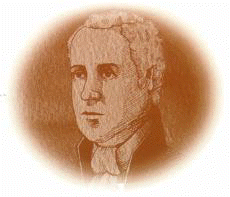
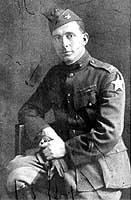
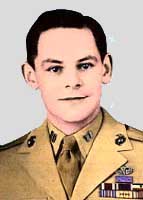
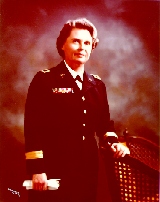
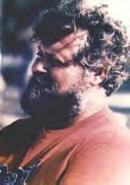
Notable Relatives
United States

"From this small hill by the Glazert Burn
They bequeathed a Soul unto our Name
From Hist'ries Heart we may discern
Who We are and from Whence we came
Whose Bearer's deeds did Greatness earn
For Dunlop, Dunlap, DeLap Same"
MJD from "The Black'n'Blue" 2002
Scotland/Ireland/USA/Australia/Canada/India/Caribbean/France/China

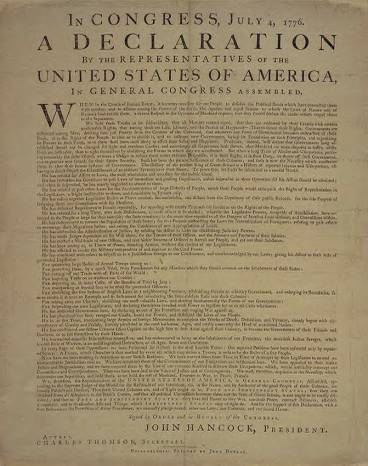

-John Dunlap (1746-27 Nov 1812), a Scots-Irishman
from Strabane, Co. Tyrone, Ulster, printed the first daily newspaper in the US,
the "General Advertiser" , in Philadelphia. He was appointed printer to the
Continental Congress in 1773, printing not only the first copy of the
Declaration of Independence-at the time called "the Dunlap Broadside" (see
above- one of 26 copies still in existence) but also the Constitution of the
United States. John founded the 1st Troop of Philadelphia City Calvary in 1774,
seeing action in the campaign of 1776-77 at Princeton and Trenton. John also
subscribed L4,000 to the American Army in 1780 and owned 98,000 acres in
Virginia and the land on which Utica, Ohio now stands. (His wife, Janet
Rutherford, was the niece to Benjamin Franklin's wife. The couple were frequent
visitors and close friends of the Franklin's. Janet was descended from the
Rutherfords of Hunthill, Strabane, Northern Ireland....distant cousins of Sir
Walter Scott!...submitted by Gary Harding)
Dunlap Records
Gray's
Printing
William
Dunlap (1766-1839), American painter, playwright, and historian who was
considered the "Father" of American drama. He was one of the founders of the
National Academy of Design (1826) and wrote "History of the Arts of Design in
the United States"(1834), and "History of the American Theatre" (1832).
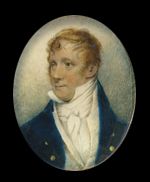
-Robert
P. Dunlap governor of Maine, born in Brunswick, Maine, 15 August 1796; died
there, 20 October 1859. He was graduated at Bowdoin in 1815, admitted to the bar
in 1818 and began practice in his native town, but soon abandoned it, having
inherited a fortune. He was a member of the lower house of the legislature in
1821'2, of the senate in 1823, and its president in 1827'9 and 1831'3. He was
chosen to the executive council in 1833, was governor of the state in 1834'8,
and was elected to congress as a Democrat in 1842, and served two terms, in
1843'7. He was for many years president of the board of overseers of Bowdoin
College, collector of Portland in 1848'9, and postmaster of Brunswick in 1853'7.
Governor Dunlap was a prominent freemason, being the head of the order in the
United States for nine consecutive years.
 -Fred Dunlap(1859-1902)Second baseman for the Cleveland
Spiders and the St. Louis Maroons, Fred led the National League in ALL fielding
categories and twice batted over .300. His greatest year was 1884, when he not
only led all second baseman in those 5 fielding categories, but ALSO lead the
league in batting (.420), slugging (.621), runs (160) and Home Runs (13). The
160 runs scored is still #14 all-time, and Fred is tied with Ty Cobb and George
Sisler for 7th highest average in one season all-time.
-Fred Dunlap(1859-1902)Second baseman for the Cleveland
Spiders and the St. Louis Maroons, Fred led the National League in ALL fielding
categories and twice batted over .300. His greatest year was 1884, when he not
only led all second baseman in those 5 fielding categories, but ALSO lead the
league in batting (.420), slugging (.621), runs (160) and Home Runs (13). The
160 runs scored is still #14 all-time, and Fred is tied with Ty Cobb and George
Sisler for 7th highest average in one season all-time.
 Brigadier
General Robert H. Dunlap 1879-1931. Robert H Dunlap born 22 December 1879 in
Washington, D.C., was appointed a second lieutenant in the Marine
Brigadier
General Robert H. Dunlap 1879-1931. Robert H Dunlap born 22 December 1879 in
Washington, D.C., was appointed a second lieutenant in the Marine

Corps 8 August 1898. He served with distinction in the Spanish-American War,
in the Philippines and China during 1900, including the Battle of Tientsin of
the Boxer Rebellion; and in the occupation of Vera Cruz, Mexico, in 1914. For
his distinguished service as regimental commander during the Meuse Argonne
campaign in World War I, he was awarded a Citation Certificate by
Commander-in-Chief, A.E.F.; the French Fourragere; and the Navy Cross. In 1928
he served in Nicaragua and was awarded the Distinguished Service Medal and the
Medal of Merit of Nicaragua. Brigadier General Dunlap sacrificed his life
attempting to rescue a woman imprisoned in a landslide in France 19 May 1931.
He had a USS destroyer named after him, the
USS
Dunlap.
Knight Dunlap (1875-1949) is the "forgotten man" of American psychology.
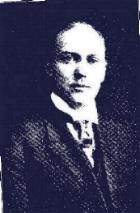 President of APA (1922); first editor of the Journal of Comparative Psychology
(originally Psychobiology.); critique of the group mind concept; pioneer in
arguing for an experimental approach to social psychology; developer of the
"negative practice" technique for the treatment of maladaptive habits; creation
of a theoretical system called "Response Psychology;" invention of the Dunlap
chronoscope, Dunlap tapping table, and the Dunlap chair (for vestibular
research). Dunlap conducted important research on color vision, audition, and
the nystagmatic reflex. He was also among the first to demonstrate practice
effects in intelligence testing. Dunlap's mind was wide-ranging and he wrote
books on physiological psychology, the psychology of religion, social
psychology, general psychology, psychoanalysis, and personal adjustment. He also
was an important leader of national and regional organizations including APA,
the Western Psychological Association, the National Institute for Psychology,
the National Research Council, and the Southern Society for Philosophy and
Psychology.
President of APA (1922); first editor of the Journal of Comparative Psychology
(originally Psychobiology.); critique of the group mind concept; pioneer in
arguing for an experimental approach to social psychology; developer of the
"negative practice" technique for the treatment of maladaptive habits; creation
of a theoretical system called "Response Psychology;" invention of the Dunlap
chronoscope, Dunlap tapping table, and the Dunlap chair (for vestibular
research). Dunlap conducted important research on color vision, audition, and
the nystagmatic reflex. He was also among the first to demonstrate practice
effects in intelligence testing. Dunlap's mind was wide-ranging and he wrote
books on physiological psychology, the psychology of religion, social
psychology, general psychology, psychoanalysis, and personal adjustment. He also
was an important leader of national and regional organizations including APA,
the Western Psychological Association, the National Institute for Psychology,
the National Research Council, and the Southern Society for Philosophy and
Psychology.
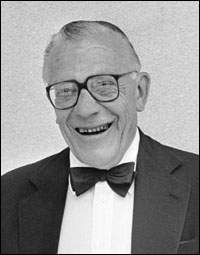 -John
Thomas Dunlop.
Harvard
University Bio
-John
Thomas Dunlop.
Harvard
University Bio
Dunlop, the Lamont University Professor
Emeritus, was a widely respected labor economist who served as dean of the
Faculty of Arts and Sciences (FAS) from 1969 to 1973. An adviser to many U.S
presidents beginning with Franklin D. Roosevelt, Dunlop was secretary of labor
under Gerald Ford, serving from March 1975 to January 1976.
Born in Placerville, Calif., in 1914 and
raised in the Philippines where his parents served as missionaries, Dunlop
earned a bachelor's degree (1935) and a Ph.D. (1939) from the University of
California, Berkeley. He joined the Harvard faculty in 1938, becoming associate
professor of economics in 1945 and full professor in 1950. He chaired the
Economics Department from 1961 to 1966. Dunlop served as dean of the Faculty of
Arts and Sciences during a time of student unrest. He led the faculty-student
University Committee on Governance, which examined and made recommendations on
University issues and concerns. He was appointed Lamont University Professor in
1971.
In addition to serving as secretary of
labor, Dunlop held many other government posts, including: director of the Cost
of Living Council (1973-74), chairman of the Construction Industry Stabilization
Committee (1971-74), chair of the Commission of the Future of Worker/Management
Relations (1993-95), chair of the Massachusetts Joint Labor-Management Committee
for Municipal Police and Firefighters (1977-2003), and chair of the Commission
on Migratory Farm Labor (1984-2003). He wrote numerous books and articles,
including: "Wage Determination Under Trade Unions" (1944); "Collective
Bargaining: Principles and Cases" (1949); "Industrial Relations Systems" (1958);
"Labor in the Twentieth Century" (ed., 1978); "Dispute Resolution, Negotiation
and Consensus Building" (1984); and "A Stitch in Time: Lessons from the Apparel
and Textile Industries" (with Abernathy, Hammond, and Weil, 1999).
"John Dunlop was a towering figure in
Harvard's history," said Harvard University President Lawrence H. Summers. "As a
scholar, dean, secretary of labor, and an adviser to countless institutions,
John Dunlop was a major contributor to the life of our nation and to our
university. He will be missed."
Captain Robert H. Dunlap
Commanding Officer of Company C, First Battalion,
 Twenty-Sixth Marines, Fifth Marine Division in action against enemy Japanese
forces during the seizure of Iwo Jima on 20 and 21 February 1945. He inspired
his men to heroic
Twenty-Sixth Marines, Fifth Marine Division in action against enemy Japanese
forces during the seizure of Iwo Jima on 20 and 21 February 1945. He inspired
his men to heroic
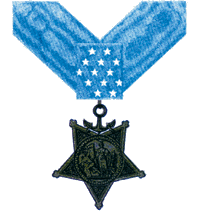
efforts during a critical phase of this battle and by his
cool decision, indomitable fighting spirit and daring tactics in the face of
fanatical opposition greatly accelerated the final decisive defeat of Japanese
countermeasures in his sector and materially furthered the continued advance of
his company. For his personal valor on these days he was awarded the US Medal of
Honor by President Harry S. Truman
-William "Billy" James Dunlop III 1941-1984. A
descendant of James Dunlop of
 Ayr
and a seafaring adventurer in the grand Celtic tradition, Billy holds the
Guinness World record for a transatlantic Crossing in the smallest boat ever. He
made the journey from Portland, Maine to Falmouth, England in the Spring of 1982
in the "Wind's Will", a nine foot boat! In July 1983, this brave Dunlop set out
to circumnavigate the globe in the same nine-foot craft!! Billy pulled into one
of the Cook Islands for repairs and left on June 23rd, 1984, his birthday. He
was bound for Australia where so many Dunlops have gone before, but none in so
brave a fashion!! He was never heard from again, and no trace was ever found.
Conjecture was that he was caught in a storm two days out of the Cook Islands.
Bill's quote before he left on his global adventure was: "I'd rather die out
there trying than not do it at all." -Submitted by Donna Dunlop Thompson, Bill's
proud sister.
Ayr
and a seafaring adventurer in the grand Celtic tradition, Billy holds the
Guinness World record for a transatlantic Crossing in the smallest boat ever. He
made the journey from Portland, Maine to Falmouth, England in the Spring of 1982
in the "Wind's Will", a nine foot boat! In July 1983, this brave Dunlop set out
to circumnavigate the globe in the same nine-foot craft!! Billy pulled into one
of the Cook Islands for repairs and left on June 23rd, 1984, his birthday. He
was bound for Australia where so many Dunlops have gone before, but none in so
brave a fashion!! He was never heard from again, and no trace was ever found.
Conjecture was that he was caught in a storm two days out of the Cook Islands.
Bill's quote before he left on his global adventure was: "I'd rather die out
there trying than not do it at all." -Submitted by Donna Dunlop Thompson, Bill's
proud sister.
-John Glenn
(July 18, 1921-), American astronaut, pilot. A retired Marine
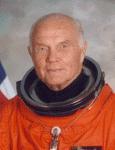 Colonel, John Glenn has been awarded the Distinguished Flying Cross on six
occasions, and holds the Air Medal with 18 clusters for service during WWII and
Korea. He has won many awards and medals, almost too numerous to list. His
signature accomplishment remains his piloting the Mercury-Atlas 6 "friendship 7"
spacecraft on the first manned orbital mission on Feb 20, 1962. He also flew in
the STS-95 "Discovery" shuttle mission on Oct 29-Nov 7, 1998. He is descended
from the Dunlaps through his maternal grandmother.
Colonel, John Glenn has been awarded the Distinguished Flying Cross on six
occasions, and holds the Air Medal with 18 clusters for service during WWII and
Korea. He has won many awards and medals, almost too numerous to list. His
signature accomplishment remains his piloting the Mercury-Atlas 6 "friendship 7"
spacecraft on the first manned orbital mission on Feb 20, 1962. He also flew in
the STS-95 "Discovery" shuttle mission on Oct 29-Nov 7, 1998. He is descended
from the Dunlaps through his maternal grandmother.
John David Dunlop was born in Cleburne,
Texas, a railroad town south of Fort Worth. But in 1927 at age 3, he flew in his
uncle's biplane. From then on, Dunlop had a love affair with flight. An Eagle
Scout, Dunlop graduated from high school and then joined the Marine Corps in
1942. As a fighter pilot, he flew more than 100 missions in two South Pacific
campaigns — the Marshall Islands and the Western Caroline and Peleliu islands.In
1946 he met and married Eleanor Jane Feild, also a Marine, who had learned to
fly at 16. His wife of 56 years lives in Tucson. He also was an aerial
photographer in the Korean War before becoming a test pilot for a number of
aircraft and the Lunar Lander. His 20-year military career included two
Distinguished Flying Crosses, a Silver Star, Purple Heart and Air Medal with two
gold stars. John David Dunlop died April 4, 2003.
Brigadier General Lillian Dunlap Beginning her career as an Army nurse in
1942  as a second Lieutenant, Lillian retired in 1975 as a Brigadier General in the US
Army. Ms Dunlap served as the Chief of the Army Nursing Corps in 1971 and is
only the second woman to serve as a Brigadier General, receiving her stars from
the legendary General William Westmoreland. Among her war time assignments, she
served at the 59th Station Hospital, New Guinea, Admiralty Islands and
Philippine Islands from 1943-1945. These were some of the 'hot spots' during
World War II. Other overseas assignments were in Germany in 1954-57 and as Chief
Nurse in Okinawa 1965-66. She has been the recipient of the Woman's
International Center's Living Legacy Award in 1998. See her website to read
about the many awards and activities attributed to this living legend.
Read
her memoirs
as a second Lieutenant, Lillian retired in 1975 as a Brigadier General in the US
Army. Ms Dunlap served as the Chief of the Army Nursing Corps in 1971 and is
only the second woman to serve as a Brigadier General, receiving her stars from
the legendary General William Westmoreland. Among her war time assignments, she
served at the 59th Station Hospital, New Guinea, Admiralty Islands and
Philippine Islands from 1943-1945. These were some of the 'hot spots' during
World War II. Other overseas assignments were in Germany in 1954-57 and as Chief
Nurse in Okinawa 1965-66. She has been the recipient of the Woman's
International Center's Living Legacy Award in 1998. See her website to read
about the many awards and activities attributed to this living legend.
Read
her memoirs
Lt Colonel William Dunlap Simpson, lawyer of Laurens, S.C. Oct 1823- Dec 26 1890.
Served during the Civil War with the 14th Carolina Volunteers and in
the Confederate Congress (1863-1865). In 1876, he was S.C. lieutenant governor
from 1876-1878 and, in 1878, was acting governor until he became chief justice
of the state Supreme Court from 1880 until his death. Owner of a plantation in
Laurens, SC, he married Jane E. Young, daughter of Henry Clinton Young (b.
1794), lawyer of Laurens, S.C., and Lucy Melissa Young (1802-1874). William and
Jane's children included William Dunlap, Jr., and Ernest, both lawyers, and John
W., who was a banker in Spartanburg S.C., Greensboro, N.C., and Tennessee.
William Dunlap Simpson, lawyer of Laurens, S.C. Oct 1823- Dec 26 1890.
Served during the Civil War with the 14th Carolina Volunteers and in
the Confederate Congress (1863-1865). In 1876, he was S.C. lieutenant governor
from 1876-1878 and, in 1878, was acting governor until he became chief justice
of the state Supreme Court from 1880 until his death. Owner of a plantation in
Laurens, SC, he married Jane E. Young, daughter of Henry Clinton Young (b.
1794), lawyer of Laurens, S.C., and Lucy Melissa Young (1802-1874). William and
Jane's children included William Dunlap, Jr., and Ernest, both lawyers, and John
W., who was a banker in Spartanburg S.C., Greensboro, N.C., and Tennessee.
 -Alexander William Dunlap DVD, MD. NASA payload specialist who
supported many Shuttle flight experiments and is currently a candidate for
on-board specialist for in-flight animal experimentation. The second of our Clan
to carry the name to new heights..
-Alexander William Dunlap DVD, MD. NASA payload specialist who
supported many Shuttle flight experiments and is currently a candidate for
on-board specialist for in-flight animal experimentation. The second of our Clan
to carry the name to new heights..
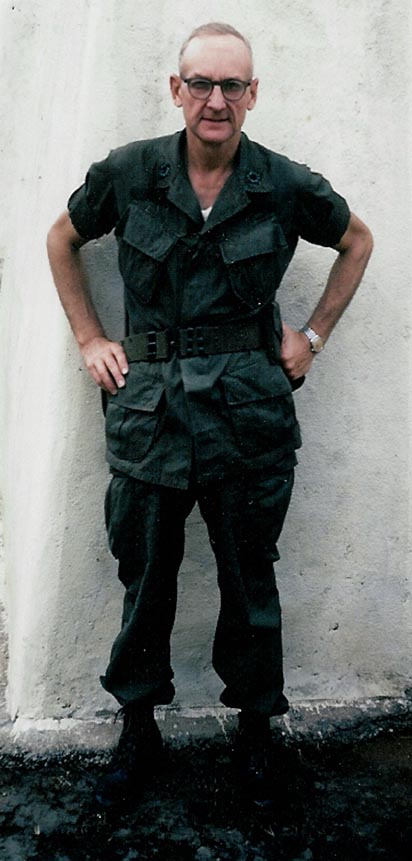 Lt. Col John (Jack) E Delap A U-2 Pilot and
WWII and Vietnam vet, Jack planned and flew missions as Mission Planner and
Chief of Navigation for the original training cadre of U-2 spy planes out of
Groom Lake in Nevada, also called Area 51. He flew over the Republic of China
and the USSR. He had won the DFC with Oak cluster, Bronze Star, Air medal (5),
and many more.
Lt. Col John (Jack) E Delap A U-2 Pilot and
WWII and Vietnam vet, Jack planned and flew missions as Mission Planner and
Chief of Navigation for the original training cadre of U-2 spy planes out of
Groom Lake in Nevada, also called Area 51. He flew over the Republic of China
and the USSR. He had won the DFC with Oak cluster, Bronze Star, Air medal (5),
and many more.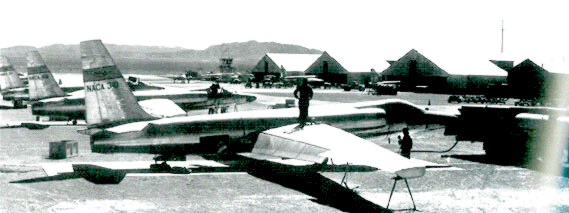
-James E. Dunlap, Rider for the
Pony Express. In mid-century America,
communication between St. Joseph,
Missouri and the fringe of western settlement and gold mining communities of
California challenged the bold and made skeptical the timid. Into this picture
rode the Pony Express. In rain and in snow, in sleet and in hail over moonlit
prairie, down tortuous mountain path . . . pounding pony feet knitted together
the ragged edges of a rising nation. From these hearty souls who toiled over
plain and mountain that understanding might be more generally diffused, a nation
spanning a continent was ours to inherit. In the spirit of the Pony Express it
is for us to bequeath to those who shall follow, new trails in the sky uniting
in thought and in deed." - Frank S. Popplewell
between St. Joseph,
Missouri and the fringe of western settlement and gold mining communities of
California challenged the bold and made skeptical the timid. Into this picture
rode the Pony Express. In rain and in snow, in sleet and in hail over moonlit
prairie, down tortuous mountain path . . . pounding pony feet knitted together
the ragged edges of a rising nation. From these hearty souls who toiled over
plain and mountain that understanding might be more generally diffused, a nation
spanning a continent was ours to inherit. In the spirit of the Pony Express it
is for us to bequeath to those who shall follow, new trails in the sky uniting
in thought and in deed." - Frank S. Popplewell
- Pvt. William Dunlap, Troop "M", 10th
Calvary 1898, a Scottish-African-American. ...a
Buffalo Soldier: In July 1866
Congress passed legislation establishing two cavalry and four infantry regiments
(later consolidated to two) whose enlisted composition was to be made up of
African-Americans. The mounted regiments were the 9th and 10th Cavalries, soon
nicknamed Buffalo Soldiers by the Cheyenne and Comanche. The 9th and 10th
Cavalries' service in subduing Mexican revolutionaries, hostile Native
Americans, outlaws, comancheros, and rustlers was as
...a
Buffalo Soldier: In July 1866
Congress passed legislation establishing two cavalry and four infantry regiments
(later consolidated to two) whose enlisted composition was to be made up of
African-Americans. The mounted regiments were the 9th and 10th Cavalries, soon
nicknamed Buffalo Soldiers by the Cheyenne and Comanche. The 9th and 10th
Cavalries' service in subduing Mexican revolutionaries, hostile Native
Americans, outlaws, comancheros, and rustlers was as invaluable as it was unrecognized. It was also accomplished over some of the
most rugged and inhospitable country in North America. A list of their
adversaries - Geronimo, Sitting Bull, Victorio, Lone Wolf, Billy the Kid, and
Pancho Villa - reads like a "Who's Who" of the American West. Lesser known, but
equally important, the Buffalo Soldiers explored and mapped vast areas of the
southwest and strung hundreds of miles of telegraph lines. They built and
repaired frontier outposts around which future towns and cities sprang to life.
Without the protection provided by the 9th and 10th Cavalries, crews building
the ever expanding railroads were at the mercy of outlaws and hostile Indians.
The Buffalo Soldiers consistently received some of the worst assignments the
Army had to offer. They also faced fierce prejudice to both the colors of their
Union uniforms and their skin by many of the citizens of the post-war frontier
towns. Despite this, the troopers of the 9th and 10th Cavalries developed into
two of the most distinguished fighting units in the Army, and a Dunlap was among
them, deservedly.
invaluable as it was unrecognized. It was also accomplished over some of the
most rugged and inhospitable country in North America. A list of their
adversaries - Geronimo, Sitting Bull, Victorio, Lone Wolf, Billy the Kid, and
Pancho Villa - reads like a "Who's Who" of the American West. Lesser known, but
equally important, the Buffalo Soldiers explored and mapped vast areas of the
southwest and strung hundreds of miles of telegraph lines. They built and
repaired frontier outposts around which future towns and cities sprang to life.
Without the protection provided by the 9th and 10th Cavalries, crews building
the ever expanding railroads were at the mercy of outlaws and hostile Indians.
The Buffalo Soldiers consistently received some of the worst assignments the
Army had to offer. They also faced fierce prejudice to both the colors of their
Union uniforms and their skin by many of the citizens of the post-war frontier
towns. Despite this, the troopers of the 9th and 10th Cavalries developed into
two of the most distinguished fighting units in the Army, and a Dunlap was among
them, deservedly.
Richard Gilliam Dunlop.
Son of Hugh
Dunlop of Tennessee, he was at the Battle of New Orleans in 1814 – 15 as a
Captain of Cavalry with General Andrew Jackson, and became one of his firm
friends. Volunteer troops were called for once more as the Seminoles, with their
Chief, Osceola, were resisting the treaty stipulation that they move west. The
East Tennessee Mounted Troops assembled at Athens and elected R. G. Dunlap
Brigadier General of their brigade. Their task was finished after only two
battles. After a treaty ended the Seminole War, Richard returned to East
Tennessee and studied law in the office of John McCampbell. He was soon
practicing law in Knoxville, becoming a member of the Bar in 1822.
President Jackson
officially proclaimed the Cherokee Removal Treaty in 1836. Gen. R. G. Dunlap and
his troops policed the
 Cherokees
in Tennessee, North Carolina and Georgia as they were moved west. When his
troops were disbanded in autumn he said that he gave the Indians all the
protection in his power, the whites needed none. He added that he would never
aid in executing, “at the point of the bayonet, a treaty made by a lean minority
against the will and authority of the Cherokee people.”
Gen. Dunlap then went to Nashville
looking for funding and authority to take his brigade to aid the Texans in their
fight for independence. He boasted that he would raise a force of between two
and five thousand men provided he could retain his rank of General, but the
subsequent victory at the Battle of San Jacinto in April 1836, made it
unnecessary. Richard moved to Texas in 1837, and after the election of Mirabeau
Lamar as President of the Republic of Texas, he was appointed Secretary of the
Treasury on 14Dec1838. As such, Richard hand-signed Texas’ currency issues of
1839....- Kenneth Dunlop
Cherokees
in Tennessee, North Carolina and Georgia as they were moved west. When his
troops were disbanded in autumn he said that he gave the Indians all the
protection in his power, the whites needed none. He added that he would never
aid in executing, “at the point of the bayonet, a treaty made by a lean minority
against the will and authority of the Cherokee people.”
Gen. Dunlap then went to Nashville
looking for funding and authority to take his brigade to aid the Texans in their
fight for independence. He boasted that he would raise a force of between two
and five thousand men provided he could retain his rank of General, but the
subsequent victory at the Battle of San Jacinto in April 1836, made it
unnecessary. Richard moved to Texas in 1837, and after the election of Mirabeau
Lamar as President of the Republic of Texas, he was appointed Secretary of the
Treasury on 14Dec1838. As such, Richard hand-signed Texas’ currency issues of
1839....- Kenneth Dunlop
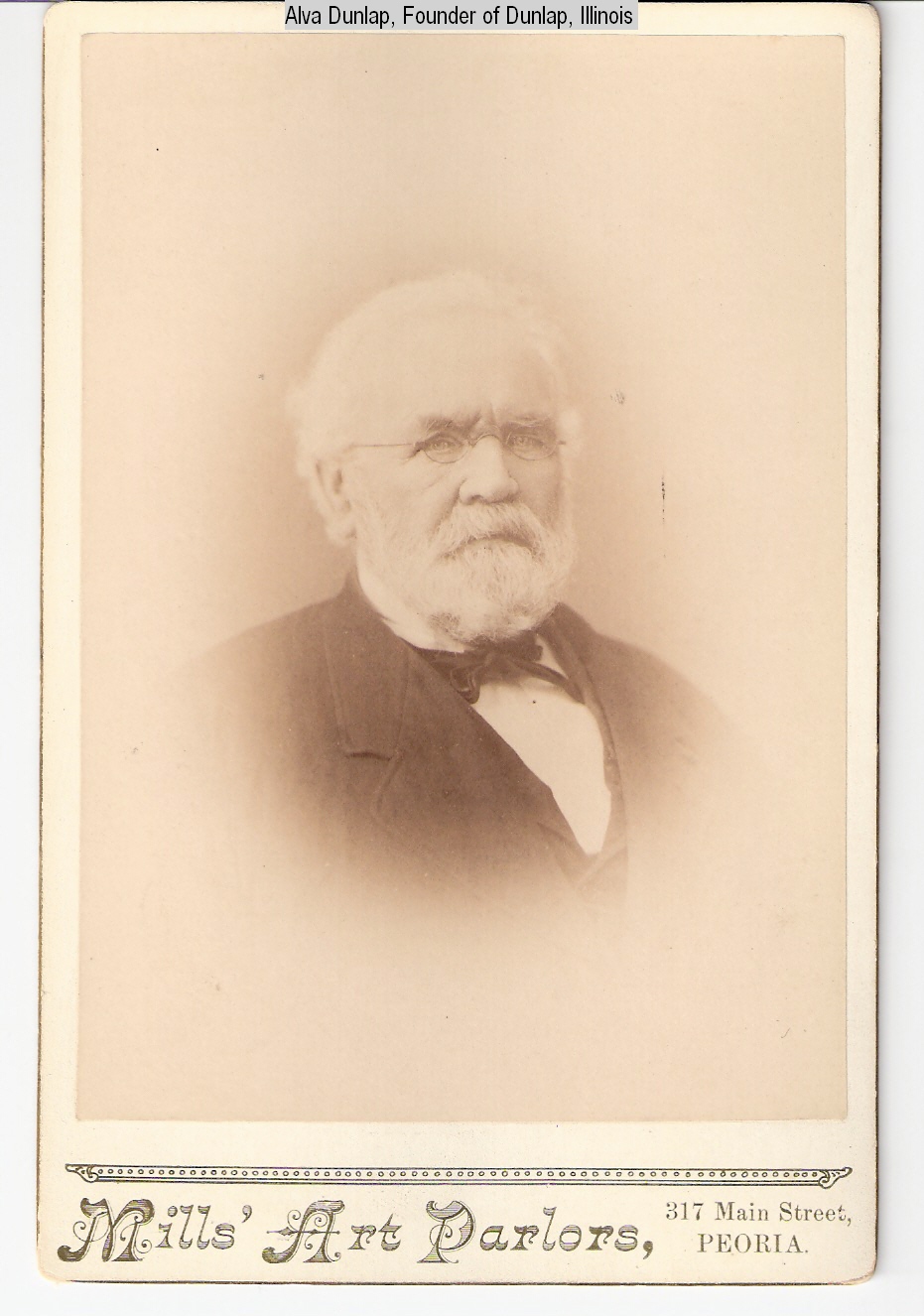 Alva
Dunlap Founder of Dunlap, Illinois.
Alva Dunlap was born on October 26, 1805 at Canajoharie, Montgomery County, New
York. As early as 1834, Alva began exploring the west, and made at least two
trips to Illinois, looking for suitable land. In 1837, he chose the northwest
quarter of Section 14, in what is now Radnor Township, Peoria County, Illinois.
He built a little frame house, 16’ x 24’ in 1837 on his newly acquired land. The
next year, 1838, he brought his family to Illinois. They were living in Sandy
Creek, New York and left Sackets Harbor, New York on August 11, 1838 on a
schooner of about 100 tons, bound for Chicago, Illinois via the Great Lakes.
They arrived in Chicago and proceeded in wagons to their new homestead, arriving
on October 11, 1838. Accompanying him were his wife Mary and five children,
Burleigh, Byron, Marshall Ney, Frances Marie and Gilbert Lane 1st,
his parents, Smith and Eleanor Dunlap, his sister Ellen Dunlap and his brother
Napoleon Dunlap. By 1871, Alva was a prominent landowner in Radnor Township and
a staunch supporter of the Peoria and Rock Island Railway Company, which was
extending its tracks from Peoria. Family legend says that he donated the
right-of-way through his land to the railroad, and helped the railroad secure
the right-of-way from other farmers. At the same time, he set aside 40 acres of
his land on
Section 11 for a village, and asked that the town he was laying out be named for
him. The Village of Dunlap was laid out on June 11, 1871. It is
located 15 miles northwest of Peoria, Illinois. The village grew fairly quickly,
and in a few years had 300 residents.
Alva
Dunlap Founder of Dunlap, Illinois.
Alva Dunlap was born on October 26, 1805 at Canajoharie, Montgomery County, New
York. As early as 1834, Alva began exploring the west, and made at least two
trips to Illinois, looking for suitable land. In 1837, he chose the northwest
quarter of Section 14, in what is now Radnor Township, Peoria County, Illinois.
He built a little frame house, 16’ x 24’ in 1837 on his newly acquired land. The
next year, 1838, he brought his family to Illinois. They were living in Sandy
Creek, New York and left Sackets Harbor, New York on August 11, 1838 on a
schooner of about 100 tons, bound for Chicago, Illinois via the Great Lakes.
They arrived in Chicago and proceeded in wagons to their new homestead, arriving
on October 11, 1838. Accompanying him were his wife Mary and five children,
Burleigh, Byron, Marshall Ney, Frances Marie and Gilbert Lane 1st,
his parents, Smith and Eleanor Dunlap, his sister Ellen Dunlap and his brother
Napoleon Dunlap. By 1871, Alva was a prominent landowner in Radnor Township and
a staunch supporter of the Peoria and Rock Island Railway Company, which was
extending its tracks from Peoria. Family legend says that he donated the
right-of-way through his land to the railroad, and helped the railroad secure
the right-of-way from other farmers. At the same time, he set aside 40 acres of
his land on
Section 11 for a village, and asked that the town he was laying out be named for
him. The Village of Dunlap was laid out on June 11, 1871. It is
located 15 miles northwest of Peoria, Illinois. The village grew fairly quickly,
and in a few years had 300 residents.
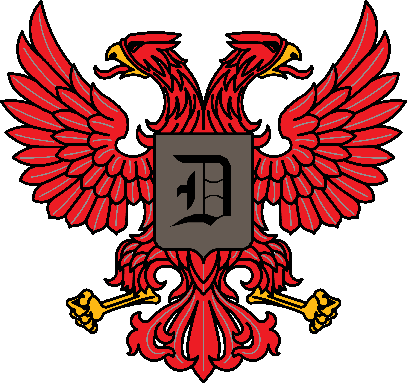





![]()




 -Fred Dunlap(1859-1902)Second baseman for the Cleveland
Spiders and the St. Louis Maroons, Fred led the National League in ALL fielding
categories and twice batted over .300. His greatest year was 1884, when he not
only led all second baseman in those 5 fielding categories, but ALSO lead the
league in batting (.420), slugging (.621), runs (160) and Home Runs (13). The
160 runs scored is still #14 all-time, and Fred is tied with Ty Cobb and George
Sisler for 7th highest average in one season all-time.
-Fred Dunlap(1859-1902)Second baseman for the Cleveland
Spiders and the St. Louis Maroons, Fred led the National League in ALL fielding
categories and twice batted over .300. His greatest year was 1884, when he not
only led all second baseman in those 5 fielding categories, but ALSO lead the
league in batting (.420), slugging (.621), runs (160) and Home Runs (13). The
160 runs scored is still #14 all-time, and Fred is tied with Ty Cobb and George
Sisler for 7th highest average in one season all-time. 
 President of APA (1922); first editor of the Journal of Comparative Psychology
(originally Psychobiology.); critique of the group mind concept; pioneer in
arguing for an experimental approach to social psychology; developer of the
"negative practice" technique for the treatment of maladaptive habits; creation
of a theoretical system called "Response Psychology;" invention of the Dunlap
chronoscope, Dunlap tapping table, and the Dunlap chair (for vestibular
research). Dunlap conducted important research on color vision, audition, and
the nystagmatic reflex. He was also among the first to demonstrate practice
effects in intelligence testing. Dunlap's mind was wide-ranging and he wrote
books on physiological psychology, the psychology of religion, social
psychology, general psychology, psychoanalysis, and personal adjustment. He also
was an important leader of national and regional organizations including APA,
the Western Psychological Association, the National Institute for Psychology,
the National Research Council, and the Southern Society for Philosophy and
Psychology.
President of APA (1922); first editor of the Journal of Comparative Psychology
(originally Psychobiology.); critique of the group mind concept; pioneer in
arguing for an experimental approach to social psychology; developer of the
"negative practice" technique for the treatment of maladaptive habits; creation
of a theoretical system called "Response Psychology;" invention of the Dunlap
chronoscope, Dunlap tapping table, and the Dunlap chair (for vestibular
research). Dunlap conducted important research on color vision, audition, and
the nystagmatic reflex. He was also among the first to demonstrate practice
effects in intelligence testing. Dunlap's mind was wide-ranging and he wrote
books on physiological psychology, the psychology of religion, social
psychology, general psychology, psychoanalysis, and personal adjustment. He also
was an important leader of national and regional organizations including APA,
the Western Psychological Association, the National Institute for Psychology,
the National Research Council, and the Southern Society for Philosophy and
Psychology.  -John
Thomas Dunlop.
-John
Thomas Dunlop.

 Colonel, John Glenn has been awarded the Distinguished Flying Cross on six
occasions, and holds the Air Medal with 18 clusters for service during WWII and
Korea. He has won many awards and medals, almost too numerous to list. His
signature accomplishment remains his piloting the Mercury-Atlas 6 "friendship 7"
spacecraft on the first manned orbital mission on Feb 20, 1962. He also flew in
the STS-95 "Discovery" shuttle mission on Oct 29-Nov 7, 1998. He is descended
from the Dunlaps through his maternal grandmother.
Colonel, John Glenn has been awarded the Distinguished Flying Cross on six
occasions, and holds the Air Medal with 18 clusters for service during WWII and
Korea. He has won many awards and medals, almost too numerous to list. His
signature accomplishment remains his piloting the Mercury-Atlas 6 "friendship 7"
spacecraft on the first manned orbital mission on Feb 20, 1962. He also flew in
the STS-95 "Discovery" shuttle mission on Oct 29-Nov 7, 1998. He is descended
from the Dunlaps through his maternal grandmother. 
 -Alexander William Dunlap DVD, MD. NASA payload specialist who
supported many Shuttle flight experiments and is currently a candidate for
on-board specialist for in-flight animal experimentation. The second of our Clan
to carry the name to new heights..
-Alexander William Dunlap DVD, MD. NASA payload specialist who
supported many Shuttle flight experiments and is currently a candidate for
on-board specialist for in-flight animal experimentation. The second of our Clan
to carry the name to new heights.. 

 between St. Joseph,
Missouri and the fringe of western settlement and gold mining communities of
California challenged the bold and made skeptical the timid. Into this picture
rode the Pony Express. In rain and in snow, in sleet and in hail over moonlit
prairie, down tortuous mountain path . . . pounding pony feet knitted together
the ragged edges of a rising nation. From these hearty souls who toiled over
plain and mountain that understanding might be more generally diffused, a nation
spanning a continent was ours to inherit. In the spirit of the Pony Express it
is for us to bequeath to those who shall follow, new trails in the sky uniting
in thought and in deed." - Frank S. Popplewell
between St. Joseph,
Missouri and the fringe of western settlement and gold mining communities of
California challenged the bold and made skeptical the timid. Into this picture
rode the Pony Express. In rain and in snow, in sleet and in hail over moonlit
prairie, down tortuous mountain path . . . pounding pony feet knitted together
the ragged edges of a rising nation. From these hearty souls who toiled over
plain and mountain that understanding might be more generally diffused, a nation
spanning a continent was ours to inherit. In the spirit of the Pony Express it
is for us to bequeath to those who shall follow, new trails in the sky uniting
in thought and in deed." - Frank S. Popplewell  ...a
...a
 invaluable as it was unrecognized. It was also accomplished over some of the
most rugged and inhospitable country in North America. A list of their
adversaries - Geronimo, Sitting Bull, Victorio, Lone Wolf, Billy the Kid, and
Pancho Villa - reads like a "Who's Who" of the American West. Lesser known, but
equally important, the Buffalo Soldiers explored and mapped vast areas of the
southwest and strung hundreds of miles of telegraph lines. They built and
repaired frontier outposts around which future towns and cities sprang to life.
Without the protection provided by the 9th and 10th Cavalries, crews building
the ever expanding railroads were at the mercy of outlaws and hostile Indians.
The Buffalo Soldiers consistently received some of the worst assignments the
Army had to offer. They also faced fierce prejudice to both the colors of their
Union uniforms and their skin by many of the citizens of the post-war frontier
towns. Despite this, the troopers of the 9th and 10th Cavalries developed into
two of the most distinguished fighting units in the Army, and a Dunlap was among
them, deservedly.
invaluable as it was unrecognized. It was also accomplished over some of the
most rugged and inhospitable country in North America. A list of their
adversaries - Geronimo, Sitting Bull, Victorio, Lone Wolf, Billy the Kid, and
Pancho Villa - reads like a "Who's Who" of the American West. Lesser known, but
equally important, the Buffalo Soldiers explored and mapped vast areas of the
southwest and strung hundreds of miles of telegraph lines. They built and
repaired frontier outposts around which future towns and cities sprang to life.
Without the protection provided by the 9th and 10th Cavalries, crews building
the ever expanding railroads were at the mercy of outlaws and hostile Indians.
The Buffalo Soldiers consistently received some of the worst assignments the
Army had to offer. They also faced fierce prejudice to both the colors of their
Union uniforms and their skin by many of the citizens of the post-war frontier
towns. Despite this, the troopers of the 9th and 10th Cavalries developed into
two of the most distinguished fighting units in the Army, and a Dunlap was among
them, deservedly. 

